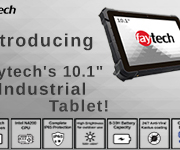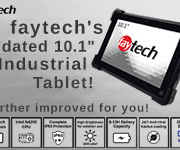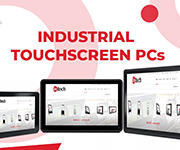Why capacitive touch will change your life
BlogHome appliances and technological equipment are ingrained in our daily lives, and we’ve grown accustomed to the switches, pushbuttons, knobs, and keyboards that operate them. A new class of control components has arisen gradually but steadily, and it now controls the way we engage with practically every piece of technology. These very accurate touchscreens use the electrical qualities of the human body to respond quickly, known as Capacitive Touch technology.
Capacitive Touch Deconstructed
A screen or any other form of the device must have various components in order to be deemed capacitive. A capacitive screen is constructed out of a transparent insulating layer, such as glass or plastic. If the insulating layer is transparent, then a fine trace of transparent conductive material is utilized to produce electrical patterns on the interior of the insulating layer.
When a finger or anything with similar electrical charge, such as capacitive touch pen or certain gloves (depending on the touch sensitivity). comes into contact with the insulating layer, the thin lines charge the magnetic field, which the device registers as a touch event. When you use your finger to stroke a capacitive touch screen, you induce a change in the magnetic field of the screen on a specific place, which is recorded by the circuit and utilized to trigger a function, such as volume control, light dimmer, or on/off.
The advantages of using capacitive touch in applications like household appliances and car control panels have been well understood. Touch control, for example, is more dependable than traditional buttons or knobs since it does not require mechanical motion and wears out less easily.

The housing is also more vigorous and cost-effective, making it perfect for use in harsh or ruggedized conditions. Where dust and moisture could easily enter the device of standard consumer displays, with these rugged (optically bonded) devices, the dust and moisture stays out. Additionally, touch screen controls also provide designers more options when it comes to creating visually appealing goods.
Examples include home appliance applications or industrial accessories, as well as next-generation ruggedized tablets for human-machine interfaces.

Automation Breeds Automation
The process of integrating Capacitive Touch into next-generation items is automated in high-tech factories. For example, six-axis industrial robots examine a flexible circuit board extensively before scanning a molded piece of plastic for specific features, with a touchscreen as visual display, for example an 13.3″ Capacitive Touch PC.
Our connection with smartphones, tablets and even automobiles necessitate the growth of touch technology and the automation that makes it possible.
Touch screens are becoming more common on household appliances and other home automation systems, with for example a 10.1″ embedded touchscreen as control unit. Connected appliances and home automation gadgets can now learn a lot about our homes and how we use them on a daily basis. By handling and automating chores in the background, home automation devices can relieve the user’s stress and boost efficiency.
Capacitive Touch is a ubiquitous technology that not only enables automation in the home but has also made its way into the industrial environment to help facilitate and manufacture efficient industrial robots. Industrial robots have been around for almost 60 years, but they were difficult to program and dangerous to operate around humans until recently.
Capacitive Touch tablets are being included with industrial robots. The arms can be readily programmed using a simple graphical interface on the tablet. Set-up time has been reduced from days to just a few hours thanks to innovations like these.
What is in Store for us: Likely Future
Capacitive Touch technology and the automated processes that support its manufacturing have merely scratched the surface of its endless possibilities.
What will be automation’s tipping point? Is it going to be when industrial robots start building other robots? Or when houses, factories, manufacturing units are automated by a single user interface? These situations may seem far off, but with the technology and capabilities enabled by human-machine interfaces and capacitive touch, they may be just around the corner.
While this could be our likely future, one shouldn’t stop leveraging Capacitive Touch Display/Monitors/PCs to the best of their interest. With all of this fueling automation to enhance efficiency, eliminate redundancies, and increase total time-to-value, it’s vital to have the correct equipment in place to take advantage of these tremendous advancements.

This is where you will need us; faytech has been developing and marketing Capacitive Touchscreen Technology in the market for years. One such example of our most selling products are the 8-15″ Capacitive Touch Monitors, the perfect choice for a wide variety of applications, including POS systems, control panels in industrial fields, kiosk systems, office/residence automation, digital signage, and in areas like shopping malls, classrooms, hotels and many more.
You can contact us to know more about how Capacitive Touch Screens can allow you to build a more efficient, dependable, and readily maintainable infrastructure.


 faytech AG
faytech AG faytech AG
faytech AG faytech AG
faytech AG faytech AG
faytech AG faytech AG
faytech AG faytech AG
faytech AG



